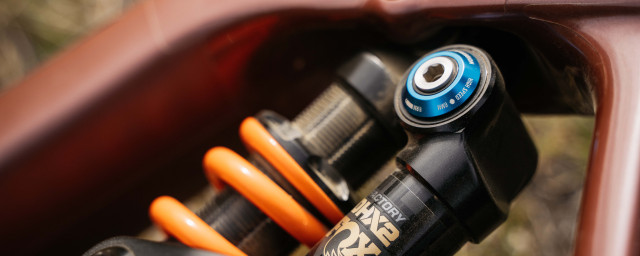Mountain bike fitness - how to improve your MTB performance

The more you ride, the fitter you’ll become. That’s the logic, but it’s faulty. Mountain biking is not only about baseline social riding fitness. If you want to progress as a rider, whether it is in cross-country mountain biking or a more gravity-orientated discipline such as downhill mountain biking, you need to cross-train. And understand the foundational principles that help riders evolve regarding fitness and strength.
- Best cheap mountain bikes 2022
- Freeride mountain biking - everything you need to know
- Mountain bike etiquette - the lowdown on trail-side manners
There is a peculiar implied bias, with most mountain bikers, that fitness will happen if they simply ride a lot. But it doesn’t work like that. Overtraining is a considerable risk for amateur riders and weekend warriors.
If you are too keen, it can have the inverse outcome – making you slower and weaker over time. Or worse: triggering a spate of compound injuries.
To become a better all-around mountain biker, you need aerobic, anaerobic and strength training. But how do these differ, and in what ratio do they apply to your specific riding? Let's find out.
Long rides, with chats
Aerobic fitness is about building a great base and endurance. And that means you need to commit time.
Aerobic fitness is the foundation of most mountain biking. It’s the pace you’ll ride when conserving energy on a climb or pedalling along level terrain. With its low intensity, aerobic training reduces injury risk and can be quite social.
The bulk of aerobic riding falls within an easy cadence. A rule is that you should be able to chat with fellow riders, in complete and coherent sentences, on an aerobic ride. It also means you are riding slower, at a lower intensity, most of the time. And that, in itself, requires time. You can’t rush the bulk of aerobic training. It’s long hours on the bike at a sedate pace.
Balancing the aerobic training regime should be some threshold work, using your race pace as a reference. But nothing too intense. Take an hour to ride and split that into thirds, with the first third being an easy cadence, then the middle third at something approaching race pace, before easing into the final third, again, at a mild effort.
Those big aerobic fitness rides can get close to cross-country stage race distances, and if you are inclined to endurance off-road riding, aerobic training should be your priority.
Interval training
The pain cave. Where aerobic training is about mild efforts and long sessions, anaerobic exercise can feel brutal. You should definitely not be able to converse with fellow riders, in coherence, during a proper anaerobic training session.
Anaerobic training is about short bursts of extreme effort. They aren’t fun, and most riders dread this training regime, but it is invaluable.
So who should you integrate anaerobic training into your riding? Intervals are the gateway experience to the pain cave of all things anaerobic. Find that hill and try to make half a dozen full climbing efforts, with about a five-minute recovery period in between.
Don’t allow the mental aspect of anaerobic training to mess with your focus. Dreading that next full-effort climb is self-defeating. Use those five-minute rest periods to focus on your achievement during the previous climb, although you might feel terrible.
Why bother with anaerobic training if most mountain biking doesn’t involve sprinting? Developing that ability to deliver short bursts of power is very useful on any off-road ride. And not in the way that most riders assume.
The climbing power you’ll develop with anaerobic intervals should allow you to confidently put in those vital pedal strokes, under strain, when climbing up roots or rocks, on a technical trail. Having the anaerobic reserves to deploy on a technical climb will prevent you from having to dab, or worse, losing momentum and keeling over, risking a preventable low-speed injury.
Anaerobic training is vital to those mountain bikers who want to race laps in their local cross-country series. Or for enduro mountain bikers and downhill riders who want to develop that surge of power, when a few yards of less steep or technical terrain, allow for some crank rotations.
The value of gym, swimming and stretching
All athletes know the value of core strength, but mountain bikers can be lulled into a false sense of security regarding theirs, thanks to technical advances.
The latest mountain bikes have such good suspension, geometry, tyres and saddles, that riders have become impervious to the value of developing better core and overall body strength. Mountain bikers in the 1990s, without the benefit of quality suspension, riding compromised geometry bikes with tiny tyres, were stronger and tougher.
Several risks present if you only work on your fitness, ignoring strength. The first is compound injury due to a weak core compromising your posture. Then there is the issue of increased crash risk, too.
Modern mountain bikes are enormously capable and can often get riders into a situation on the trail that is way beyond their skill level, at speed. This is where having reserve strength can be the difference between muscle memory reacting to that slide or terrain deflection through the handlebars – or crashing.
Another great cross-training exercise that is beneficial to all riders, is swimming. Your injury risk is negligible, and there is a healthy stretching component, too, with swimming, which can improve suppleness.
Get a kettlebell
Traditional barbell and dumbbell weight training aren’t that great for most riders. But the freedom of movement and multijoint recruitment offered by kettlebells have made these a favourite of pro riders.
Get a kettlebell coach to teach you a few simple movements, and you’ll gain confidence and control when descending technical singletrack trails. Kettlebells are probably the most crucial cross-training option for enduro and downhill mountain bikers, accurately replicating the demands of riding over big features on a steep and technical trail.
American Aaron Gwin revolutionised the speed at which downhill mountain bikers could ride in severely rocky terrain, by miraculously ‘hanging on’ when other riders were getting pinged off their bikes. Gwin’s secret was a developed kettlebell training programme, which has become commonplace for most enduro and downhill racers.
Be consistent
In order for you to reach your goals and improve your performance, there is one key aspect to it all: consistency. Make sure you have some sort of training plan and stick to it.
If you need someone to hold you accountable and help you get started, consider hiring a coach - they will help you structure your training and modify it to suit your lifestyle. Once you've built a routine, it's easier to keep to it.
In the northern hemisphere, it's not always easy to ride through the cold winter, but if you go into hibernation as soon as the ground freezes, you are not going to come out in the best shape when the spring arrives. If riding outside is not an option, consider an indoor trainer and perhaps more cross-training.
Keep things ticking over, and make sure to commit to your training, and you will come out stronger and faster!
Don’t do too much, too often
Even though consistency is the key... Don't do too much, too often, at too high an intensity. Your training should be balanced.
There is a strange trigger when riders commit to a training programme and feel they are ‘doing too little’, before inevitably adding a few sessions or enhancing overall intensity. Don’t do this.
Periodisation is foundational to successful progression, which means lots of ‘easy’ work and plenty of adequate recovery time. If you try an overcommit, the diminishing return curve is very real, and all you are doing is riding toward the injury horizon apace.














